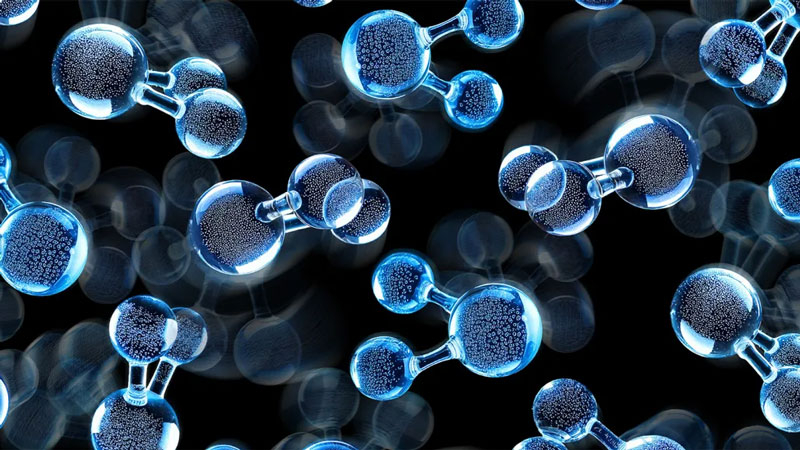Scientists Create ‘Plastic’ Alien Ice for the First Time – Solid and Liquid at the Same Time


It may seem strange to some, but there are 22 confirmed forms or phases of ice in nature, two of which are amorphous and the rest are crystalline. Crystalline ice of form Ih is found everywhere on Earth and in human life, and two other forms of crystalline ice are less common: Ic, found only in the upper atmosphere, and XI, found in Antarctica. Scientists have recently created another form, “plastic” ice, previously known only in theory.


Image source: Institut Laue-Langevin
It is important to note that the discovery was not made out of pure curiosity. Such ice could form in the depths of planets such as Neptune, as well as in the subglacial depths of the global ocean of Europa and other satellites of Saturn and Jupiter. Synthesizing samples of such ice would allow us to study its properties and compare them with theoretical data, helping us better understand other worlds so different from Earth.
At pressures above 20,000 bar (20,000 kg/cm²), ice crystals are compressed and turn into ice VII, a dense cubic structure in which the molecules are arranged like the cubes in a Rubik’s cube. Ice VII has been found in diamonds formed in the Earth’s mantle, and it is thought that it may occur inside other planets.
More than 15 years ago, computer simulations showed that when ice VII was heated and subjected to extreme pressure, individual water molecules would arrange themselves at the vertices of the crystal lattice (as in ordinary ice), but would also begin to rotate freely, as in a liquid. Because the hypothetical phase had the same cubic crystal structure as ice VII, it was called plastic ice VII. However, at the time, conducting experiments at such high pressures was technically impossible, and there was no convincing evidence for the existence of plastic ice.
Researchers at the Institut Laue-Langevin (ILL) in France developed equipment capable of simultaneously providing the required pressure and temperature. Water was heated to 326 °C and pressures of up to 60,000 bar were created. Using quasi-elastic neutron scattering (QENS), the sample was irradiated and the results were recorded by detectors. It turned out that the water molecules at the vertices of the hexagonal crystal lattice rotated as in liquid water, but at the same time “maintained their order” in the lattice, remaining in a solid state.
The type of rotation—intermittent, with switching of atomic bonds—came as a surprise to scientists, since the theory did not predict such behavior. This is the value of the experiment: it allows us to discover something new that the theory could not predict.
At temperatures above 177°C and pressures of around 30,000 bar (about 28 times the pressure at the deepest point in the world’s oceans), the team observed a cubic ice phase in which water molecules rotated at roughly the same speed as in liquid water. They identified this phase as plastic ice VII, definitively confirming its existence.
The conditions for the natural formation of plastic ice probably do not exist in the solar system. However, there are already suggestions about the existence of huge exoplanets with a global ocean, where deep underwater conditions for the formation of such a phase of ice on the bottom may be formed. And then the question arises: will there be an exchange of salts between the bottom and the water, which could contribute to the origin of life? There are many such questions, and scientists have taken the first step in studying them by creating artificial plastic ice in the laboratory.
Recent Posts
Nissan Leaf EV to Become NACS-Ported Compact Crossover in Third Generation
Nissan Leaf can rightfully be considered a long-liver of the electric car market, since the…
OpenAI expects to more than triple its revenue this year and then double it next year.
OpenAI, the market leader in generative artificial intelligence systems, remains nominally a startup, its financial…
OpenAI Decides to Hold 4o Image Generation Launch for Free Users
OpenAI has been forced to delay the release of ChatGPT's built-in image generator for free…
1440p and 240Hz for just $200: Xiaomi updates the 27-inch Redmi G27Q gaming monitor
Xiaomi continues to update its Redmi G27Q gaming monitor every year. The model was first…
Beware, Android is shutting down: OS development will cease to be public, but there is no reason to panic
Android device makers can significantly customize the look and feel of the operating system, but…
Fake GeForce RTX 4090s with RTX 3090 chips have started popping up in China — craftsmen are even changing the GPU markings
In China, scammers have started selling GeForce RTX 3090 graphics cards, passing them off as…